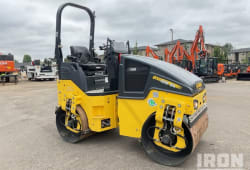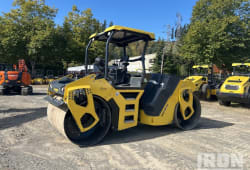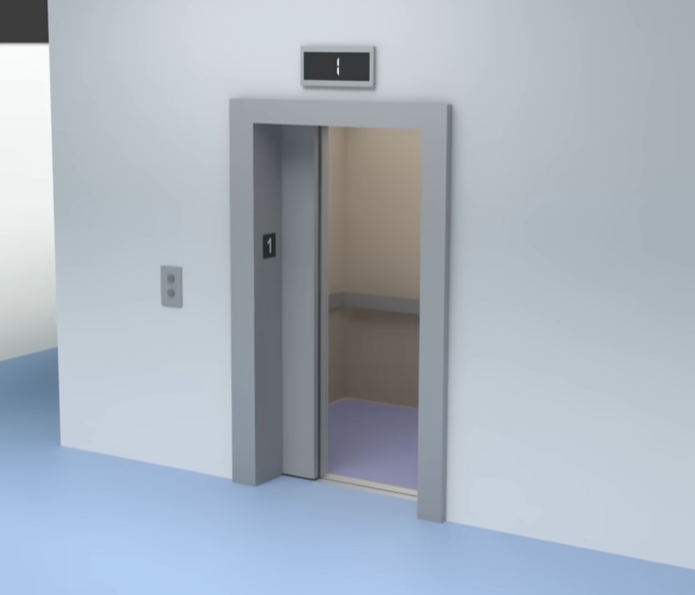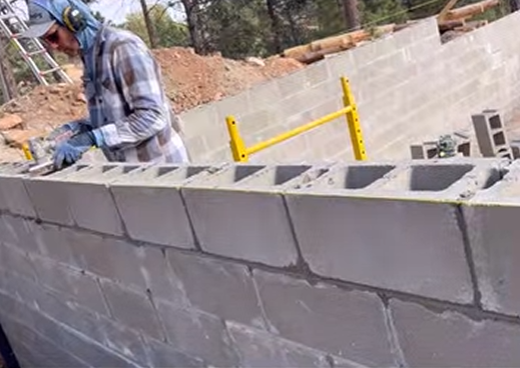Understanding Off-Site Construction Techniques for Faster Project Delivery
13 Min read
)
August 13, 2023
Off-site construction, also known as prefabrication or modular construction, is a construction method that involves the manufacturing and assembly of building components off-site, in a controlled factory environment. These components are then transported to the construction site for final installation. This innovative construction technique offers numerous benefits, including faster project delivery, improved quality control, and reduced environmental impact.
Definition and Basics of Off-Site Construction
Off-site construction refers to the construction process where building components are prefabricated in a factory setting, away from the actual construction site. The components are produced using advanced manufacturing techniques and then shipped to the site for final assembly. This method enables simultaneous construction activities, speeding up project completion while maintaining high-quality standards.
When it comes to off-site construction, a wide range of building elements can be fabricated. These include walls, floors, roof trusses, and even entire modules. The manufacturing process involves precision machinery and skilled labor, ensuring consistent quality and excellent craftsmanship. Each component is carefully designed and manufactured to meet specific project requirements.
One of the significant advantages of off-site construction is the controlled factory environment. In a factory, the manufacturing process is not hindered by weather conditions, allowing for uninterrupted production. This controlled setting also enables strict quality control measures to be implemented, resulting in a higher level of precision and consistency compared to traditional on-site construction.
The Evolution of Off-Site Construction
The concept of off-site construction is not new. It has been around for centuries, with early examples of prefabricated components dating back to ancient civilizations. For instance, the ancient Egyptians used prefabricated stone blocks to construct their monumental pyramids. Similarly, the Romans utilized precast concrete elements in their architectural marvels, such as the Pantheon.
However, advancements in technology and construction methods have revolutionized the off-site construction industry in recent years, making it a viable and highly efficient alternative to traditional on-site building methods. The integration of computer-aided design (CAD) has significantly enhanced the precision and complexity of prefabricated components.
Moreover, the use of robotic manufacturing has further streamlined the production process. Robots equipped with advanced sensors and programming can perform repetitive tasks with unparalleled accuracy, resulting in faster production times and improved efficiency. This level of automation has also reduced the reliance on manual labor, making off-site construction more cost-effective and less labor-intensive.
Another key aspect of the evolution of off-site construction is the introduction of advanced materials. Modern construction materials, such as high-performance concrete and engineered timber, offer enhanced strength, durability, and sustainability. These materials can be precisely manufactured in a factory environment, ensuring consistent quality and minimizing waste.
In conclusion, off-site construction has come a long way from its early beginnings. With the integration of advanced technologies and materials, this construction method has evolved into a highly efficient and sustainable solution for the modern building industry. As the demand for faster project delivery, improved quality control, and reduced environmental impact continues to grow, off-site construction is poised to play a significant role in shaping the future of construction.
The Benefits of Off-Site Construction
Off-site construction offers several advantages over traditional on-site construction methods. These benefits contribute to faster project delivery, improved quality control, reduced environmental impact, and much more.
Speedier Project Completion
One of the primary advantages of off-site construction is its ability to significantly accelerate project timelines. Manufacturing building components off-site allows for simultaneous construction activities to take place at the factory and on-site. This parallel construction approach eliminates many of the delays associated with traditional sequential on-site building methods. As a result, projects can be completed up to 50% faster than with conventional construction methods.
Imagine a scenario where a new office building needs to be constructed within a tight deadline. With off-site construction, the building components can be manufactured in a controlled factory environment while the construction site is being prepared. This means that the foundation can be laid and the building can start taking shape at the same time the components are being produced. The efficiency gained from this parallel approach ensures that the project is completed on time, meeting the client's requirements and avoiding costly delays.
Furthermore, off-site construction also allows for better project planning and scheduling. Since the building components are manufactured in a controlled environment, the construction process can be meticulously planned and coordinated. This reduces the risk of unexpected delays and ensures that the project progresses smoothly.
Improved Quality Control
Off-site construction enables meticulous quality control throughout the manufacturing process. The controlled factory environment, with its standardized procedures and skilled craftsmen, ensures consistent quality and minimizes errors. By eliminating the variability inherent in on-site construction, off-site construction delivers buildings with superior structural integrity and finishes.
When building components are manufactured off-site, they undergo rigorous quality checks at every stage of the production process. Skilled craftsmen carefully inspect and test each component to ensure that it meets the required standards. Any defects or deviations from the specifications can be identified and rectified before the components are transported to the construction site.
Moreover, the controlled factory environment provides better protection against external factors that can affect the quality of construction. On-site construction is often subject to weather conditions, which can lead to issues such as moisture damage or temperature-related problems. In contrast, off-site construction minimizes these risks by providing a climate-controlled environment where the building components are manufactured. This results in buildings that are not only aesthetically pleasing but also structurally sound and durable.
Reduced Environmental Impact
Off-site construction techniques are more sustainable and environmentally friendly compared to traditional construction methods. Factory manufacturing significantly reduces waste generation, as materials can be efficiently utilized and reused. Additionally, off-site construction reduces the carbon footprint associated with on-site activities, such as transportation and machinery emissions. As the construction industry strives for more sustainable practices, off-site construction offers a promising solution.
By manufacturing building components off-site, waste can be minimized through careful material management. In a factory setting, materials can be precisely measured and cut, resulting in minimal waste generation. Any excess materials can be stored and reused in future projects, reducing the need for new raw materials.
Furthermore, off-site construction reduces the environmental impact of transportation. With on-site construction, materials, and equipment need to be transported to the construction site, often over long distances. This transportation contributes to carbon emissions and air pollution. In contrast, off-site construction reduces the need for transportation as the building components are manufactured and assembled in a centralized location. This not only reduces the carbon footprint but also alleviates traffic congestion and noise pollution in urban areas.
As the construction industry continues to prioritize sustainability, off-site construction provides an innovative solution that aligns with environmental goals. By embracing off-site construction methods, builders can contribute to a greener future while reaping the numerous benefits it offers.
Key Off-Site Construction Techniques
Several off-site construction techniques are commonly used in the industry today. These techniques offer versatility and efficiency, enabling the construction of a wide range of building types.
Off-site construction techniques have revolutionized the way buildings are constructed. By shifting some of the construction processes from the traditional on-site methods to controlled factory environments, builders and developers can achieve faster project completion times, improved quality control, and reduced environmental impact.
Modular Construction
Modular construction involves the manufacturing of complete building modules in a factory. These modules are typically self-contained units that can be connected to form larger structures. The process begins with detailed design and engineering, ensuring that the modules are precisely manufactured to fit together seamlessly.
One of the key advantages of modular construction is its flexibility. The modules can be designed and configured to meet specific project requirements, allowing for customization and adaptability. This technique has gained popularity in residential, hospitality, and healthcare projects, where speed and flexibility are crucial.
Modular construction also offers benefits in terms of quality control. Since the modules are manufactured in a controlled factory environment, they can be built to higher standards and with greater precision than traditional on-site construction. This results in a more consistent and reliable end product.
Panelized Construction
Panelized construction involves the off-site fabrication of wall panels, floor panels, and roof trusses. These panels are then transported to the construction site and assembled to create the building envelope. The panels are typically made from materials such as wood, steel, or concrete, depending on the specific project requirements.
Panelized construction offers a balance between efficiency and customization. The prefabricated panels can be produced in various sizes and configurations, allowing for flexibility in design. This technique is commonly used in commercial and residential construction, where speed and cost-effectiveness are important considerations.
Another advantage of panelized construction is its reduced environmental impact. By manufacturing the panels off-site, waste can be minimized and recycling can be more easily incorporated into the construction process. Additionally, the controlled factory environment allows for more efficient use of materials, further reducing waste.
Volumetric Construction
Volumetric construction, also known as modular volumetric construction, takes modular construction to the next level. In this technique, entire rooms or sections of a building are manufactured off-site as fully finished units, complete with fixtures and fittings. These volumetric units are then transported to the site and assembled, resulting in a rapid and high-quality construction process.
Volumetric construction offers numerous benefits, particularly in projects where time is of the essence. The off-site manufacturing of fully finished units significantly reduces on-site construction time, allowing for faster project completion. This makes volumetric construction an ideal choice for projects such as hotels, student accommodations, and other time-sensitive developments.
Additionally, volumetric construction offers improved quality control. Since the units are manufactured in a controlled factory environment, they can be built to the highest standards and with meticulous attention to detail. This results in a finished product that is not only efficient but also aesthetically pleasing.
Furthermore, volumetric construction can also contribute to sustainability goals. The controlled factory environment allows for the efficient use of resources, minimizing waste and reducing the environmental impact of the construction process. Additionally, the use of modular units can facilitate future adaptability and reconfiguration, reducing the need for demolition and reconstruction.
Case Studies of Successful Off-Site Construction Projects
Real-life examples of successful off-site construction projects demonstrate the effectiveness and efficiency of this construction method.
Off-site construction, also known as modular or prefabricated construction, has gained popularity in recent years due to its numerous benefits. This innovative approach involves fabricating building components or even complete modules off-site in a controlled factory environment, then transporting them to the construction site for assembly. By utilizing off-site construction techniques, projects can achieve faster delivery times, reduced on-site labor requirements, improved quality control, and minimized disruption to the surrounding environment.
Case Study 1: Residential Building Project
In a recent residential building project, off-site construction techniques were employed to achieve faster project delivery without compromising quality. Modular construction was used to fabricate complete building modules off-site, including kitchens, bathrooms, and living areas. These modules were then transported to the site and assembled, significantly reducing on-site construction time.
The off-site fabrication process allowed for a higher degree of precision and quality control. Skilled workers in the factory environment were able to focus on perfecting each module, ensuring that the finished product met the highest standards. This level of attention to detail resulted in a residential building that not only met the client's expectations but exceeded them.
Furthermore, the reduced on-site construction time translated into cost savings for the project. With less time spent on-site, the project team was able to optimize labor resources and minimize the impact on the surrounding community. The project was completed 30% ahead of schedule, providing the client with a fast and efficient construction solution.
Case Study 2: Commercial Building Project
A large-scale commercial building project utilized panelized construction techniques to meet tight project deadlines. The wall panels and roof trusses were prefabricated off-site and delivered to the site for assembly. The panelized approach allowed for faster installation, minimizing on-site labor requirements.
One of the key advantages of panelized construction is its flexibility in design. The project team was able to customize the panels to meet the project's unique architectural requirements. This flexibility, combined with the speed of off-site fabrication, allowed for the creation of an architecturally outstanding structure that stood out in the commercial building landscape.
Despite the project's complex design, the use of off-site construction techniques enabled the project team to complete the building within the scheduled timeframe. The reduced on-site labor requirements also contributed to a safer working environment, as fewer workers were exposed to potential hazards. The successful completion of this commercial building project showcased the seamless integration of off-site construction methods and the ability to deliver high-quality structures on time and within budget.
Challenges and Solutions in Off-Site Construction
While off-site construction offers numerous benefits, it also presents some unique challenges that need to be addressed.
Logistical Challenges
The transportation of large building components from the factory to the construction site can pose logistical challenges. Specialized equipment, such as cranes and heavy haulers, is required to handle the transportation and installation of these components. Proper planning and coordination between the off-site manufacturing facility and the construction site are essential to overcome these challenges and ensure smooth project execution.
Regulatory Hurdles
Off-site construction may face regulatory hurdles, as some building codes and regulations are not specifically tailored to this construction method. Industry stakeholders need to collaborate with regulatory authorities to develop clear guidelines that address the unique aspects of off-site construction. By establishing standardized regulations, off-site construction can be further streamlined and widely accepted.
Solutions and Innovations
The off-site construction industry continuously strives to address challenges and improve efficiency through innovative solutions. Industry leaders are investing in research and development to enhance manufacturing processes, optimize transportation logistics, and develop new construction techniques. Technological advancements, such as Building Information Modeling (BIM) and robotics, are transforming the off-site construction landscape, enabling even greater precision and productivity.
The Future of Off-Site Construction
The future of off-site construction looks promising, with advancements in technology and changing market trends driving its growth.
Technological Advancements
Technology will play a pivotal role in the future of off-site construction. The integration of digital tools, such as virtual reality and augmented reality, will enhance the design, fabrication, and installation processes. Robotics and automation will further improve manufacturing efficiency, while data analytics will optimize project management and decision-making. These technological advancements will continue to propel off-site construction forward, making it increasingly efficient and reliable.
Market Trends and Predictions
Industry experts predict a steady rise in off-site construction adoption in the coming years. Increasing demand for sustainable and energy-efficient buildings, combined with the need for faster project delivery, will drive the growth of off-site construction. Additionally, the shortage of skilled labor in the construction industry will encourage more companies to explore the benefits of off-site construction, as it reduces reliance on on-site labor and increases construction productivity.
In conclusion, off-site construction techniques offer a host of advantages, including faster project delivery, improved quality control, and reduced environmental impact. The evolution of off-site construction, coupled with key techniques such as modular construction, panelized construction, and volumetric construction, has transformed the construction industry. As demonstrated by successful case studies, off-site construction projects deliver efficient and high-quality results. While challenges exist, continuous innovation and technological advancements will shape the future of off-site construction, driving its widespread adoption and contributing to faster, greener, and more efficient construction practices.














